(© ROA)
ROA is one of the most powerful and most poetic muralists in the world. For his first solo show in his homeland, Belgium, the globetrotter stopped by the Vossenplein/place du Jeu de Balle to collect a veritable cabinet of curiosities under the heading Stop Over. Sound advice, in our opinion!
“All the world’s a stage, and all the men and women merely players.” ROA would be able to identify with this phrase from Shakespeare, though the stage would probably be a canvas. Whether they are in London’s heart of the street art scene Shoreditch, at a school in Cambodia, in a Gambian village, in Mexico City, the Australian Pilbara, or in Miami, the (often disregarded) animals that the ROA leaves behind are captivating. His murals are inspired, evocative, and evince great mastery. The universal themes and high level of skill in his work both breathe a soul that is far older than ROA himself. ROA: “I find art very inspirational, and I find it very interesting how the new generation of artists is being so thoroughly influenced by the old generation. I am fascinated by the old Flemish masters, cubism, and contemporary art. There are many artists that influence my work, like Rembrandt, Bacon, Duchamp, etc. And biology books that contain anatomical drawings of animals. I draw inspiration from a lot of things, but mainly from nature, history, and life.”
ROA: art with a capital ROARRR!
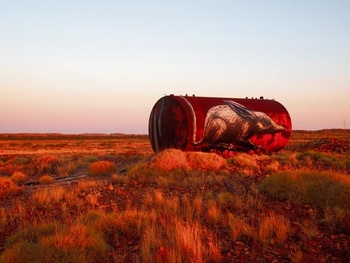
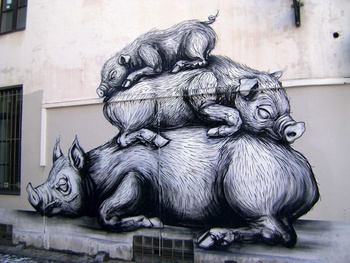
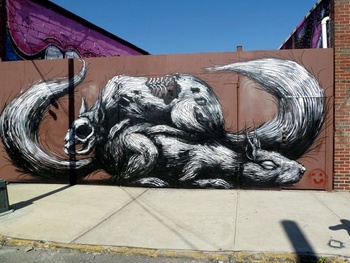
(© ROA)
Not only is the format of ROA’s murals impressive, his unique, mature voice, the breadth of his surfaces, the variation and character of his models, the various levels of his work (literally and figuratively), and the expressiveness of his subjects also have a profound impact on those who stumble across his work. You can find public space all over the world, and that is the range ROA prefers: “I love travelling and painting. Those are the things I love most. The place is definitely a source of inspiration for me. I like to work in different situations, in different climates, and in different cultures. Because the animals I draw also vary according to the place I’m in. Even the walls are different in different countries. And I like it that way: it has to be different each time. I hate routine.”
Not only is the format of ROA’s murals impressive, his unique, mature voice, the breadth of his surfaces, the variation and character of his models, the various levels of his work (literally and figuratively), and the expressiveness of his subjects also have a profound impact on those who stumble across his work. You can find public space all over the world, and that is the range ROA prefers: “I love travelling and painting. Those are the things I love most. The place is definitely a source of inspiration for me. I like to work in different situations, in different climates, and in different cultures. Because the animals I draw also vary according to the place I’m in. Even the walls are different in different countries. And I like it that way: it has to be different each time. I hate routine.”
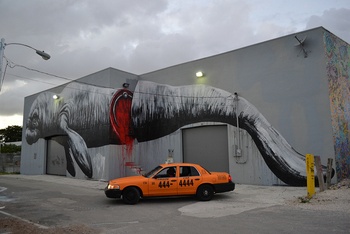
(© ROA)
The world’s a canvas, and you needn’t look too far to find a subject in that world. ROA’s work is dominated by the balancing act of the circle of life, with human beings as birds on branches that they are themselves cutting. Animals as the mirror of dominant and destructive human souls. ROA: “There are a lot of reasons why I paint animals. When I choose to paint an animal, I want to question the relationship between humans and animals. How do we decide to eat this animal instead of another one? When is it an animal, when does it become food... And of course, there is a significance to painting an animal on a wall that humans built. But the animal can also represent a culture, imply a political dimension, or simply be the local animal – like the sloth in Buenos Aires.”
Inside out
For his first solo exhibition in his homeland, Belgium, the explorer of public space is trekking to the walled-in environment of an art gallery. This seems like a strange thing to do for an artist who built his reputation outdoors, but ROA is maintaining all the parallels. His work is a dialogue between inner and outer worlds on different levels.
The world’s a canvas, and you needn’t look too far to find a subject in that world. ROA’s work is dominated by the balancing act of the circle of life, with human beings as birds on branches that they are themselves cutting. Animals as the mirror of dominant and destructive human souls. ROA: “There are a lot of reasons why I paint animals. When I choose to paint an animal, I want to question the relationship between humans and animals. How do we decide to eat this animal instead of another one? When is it an animal, when does it become food... And of course, there is a significance to painting an animal on a wall that humans built. But the animal can also represent a culture, imply a political dimension, or simply be the local animal – like the sloth in Buenos Aires.”
Inside out
For his first solo exhibition in his homeland, Belgium, the explorer of public space is trekking to the walled-in environment of an art gallery. This seems like a strange thing to do for an artist who built his reputation outdoors, but ROA is maintaining all the parallels. His work is a dialogue between inner and outer worlds on different levels.
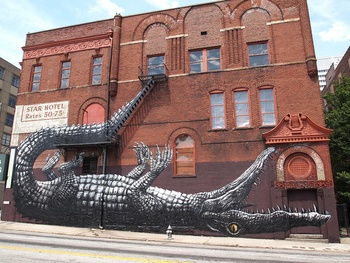
(© ROA)
On the one hand, there is a continuous exchange between the inside and the outside of the animals, which is also visible when he adapts his drawings showing the animals’ skeleton, nervous system, bowels, and so on. (Incidentally, you can find fantastic time-lapse videos on the internet of changing murals that depict the process of decomposition, for example.) And now, with the show at Bodson-Emelinckx, ROA is granting us a very varied glance inside himself, an artist who is primarily known for his outside work. The cabinet of curiosities as the ideal meeting ground for the public and private, where you can show yourself and yet stay fragmented. ROA: “Yes! That’s a good observation. I am fascinated by working on different levels in different layers. There is a parallel between my outside and inside work. I like to work on different surfaces. Outside, there is a conversation between the wall and the work. Inside, it’s the same with the materials that I use. But there, I play more by finding a structure, building it and exploring the possibilities of a surface more.”
On the one hand, there is a continuous exchange between the inside and the outside of the animals, which is also visible when he adapts his drawings showing the animals’ skeleton, nervous system, bowels, and so on. (Incidentally, you can find fantastic time-lapse videos on the internet of changing murals that depict the process of decomposition, for example.) And now, with the show at Bodson-Emelinckx, ROA is granting us a very varied glance inside himself, an artist who is primarily known for his outside work. The cabinet of curiosities as the ideal meeting ground for the public and private, where you can show yourself and yet stay fragmented. ROA: “Yes! That’s a good observation. I am fascinated by working on different levels in different layers. There is a parallel between my outside and inside work. I like to work on different surfaces. Outside, there is a conversation between the wall and the work. Inside, it’s the same with the materials that I use. But there, I play more by finding a structure, building it and exploring the possibilities of a surface more.”
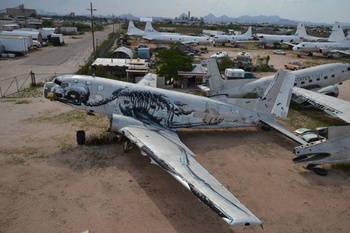
(© ROA)
Can touch this
ROA has been preparing in Brussels for weeks. All the stuff he collected on the Vossenplein/place du Jeu de Balle and brought along from his travels has been given a second, recycled life in the structure he has developed for his exhibition. This is another parallel with his work in public space: he also immerses himself in the local community for it. It is a strange awareness when you realise that the globetrotter ROA himself is continually crossing borders, while his work bears witness to the local context from the area that becomes his canvas. There is only one way to approach that enormous diversity as an outsider. ROA: “Indeed, travelling means that I’m a tourist. But I don’t find it to be something I have to overcome, because I don’t plan anything in my work. It comes automatically and that’s good. The way I work is really organic. I’m an outsider, taking part in people's lives, the culture, but I’m still a visitor.”
Can touch this
ROA has been preparing in Brussels for weeks. All the stuff he collected on the Vossenplein/place du Jeu de Balle and brought along from his travels has been given a second, recycled life in the structure he has developed for his exhibition. This is another parallel with his work in public space: he also immerses himself in the local community for it. It is a strange awareness when you realise that the globetrotter ROA himself is continually crossing borders, while his work bears witness to the local context from the area that becomes his canvas. There is only one way to approach that enormous diversity as an outsider. ROA: “Indeed, travelling means that I’m a tourist. But I don’t find it to be something I have to overcome, because I don’t plan anything in my work. It comes automatically and that’s good. The way I work is really organic. I’m an outsider, taking part in people's lives, the culture, but I’m still a visitor.”
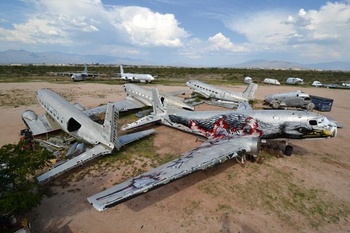
(© ROA)
And yet, ROA is embraced worldwide. His work is open, freely accessible, adapted to the space in which it appears, and appeals to an enormous number of people. And there lies yet another point of connection between the gallery and public space. ROA: “When I am working in a gallery, I appropriate the place as if it were one installation. The gallery will become a cabinet of curiosities, a Wunderkammer, where people can touch my work. I want that interaction between the visitors and my work. It will be much more dynamic and interesting for the visitors than a traditional gallery show.” So, break your routine and Stop Over!
ROA: STOP OVER • 21/2 > 23/3, wo/me/We > za/sa/Sa 14 > 19.00, gratis/gratuit/free, Bodson-Emelinckx Gallery, rue de Henninstraat 70, Elsene/Ixelles, 02-648.40.06, info@bodson-emelinckx.com, www.bodson-emelinckx.com
And yet, ROA is embraced worldwide. His work is open, freely accessible, adapted to the space in which it appears, and appeals to an enormous number of people. And there lies yet another point of connection between the gallery and public space. ROA: “When I am working in a gallery, I appropriate the place as if it were one installation. The gallery will become a cabinet of curiosities, a Wunderkammer, where people can touch my work. I want that interaction between the visitors and my work. It will be much more dynamic and interesting for the visitors than a traditional gallery show.” So, break your routine and Stop Over!
ROA: STOP OVER • 21/2 > 23/3, wo/me/We > za/sa/Sa 14 > 19.00, gratis/gratuit/free, Bodson-Emelinckx Gallery, rue de Henninstraat 70, Elsene/Ixelles, 02-648.40.06, info@bodson-emelinckx.com, www.bodson-emelinckx.com
Read more about: Expo
Fijn dat je wil reageren. Wie reageert, gaat akkoord met onze huisregels. Hoe reageren via Disqus? Een woordje uitleg.